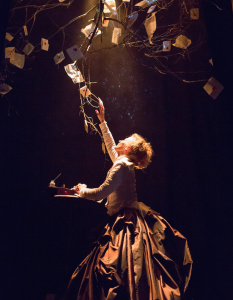
Tamara Hurwitz Pullman in La Jolla Playhouse’s Without Walls production of “Healing Wars,” conceived, choreographed and directed by Liz Lerman, runs through October 25 in the Mandell Weiss Forum. Photo by T. Wood
By Alanna Maya
La Jolla Playhouse will present the second Without Walls (WoW) Festival this month, October 9–11. The playhouse is known nationally for its commitment to the development of new work and new theatrical forms, including challenging the traditional definition of performance. The inaugural WoW Festival in 2013 was acclaimed for its one-of-a-kind performance pieces, and the return of the festival this year is no different.
“Across the theatre landscape, the relationship between the audience and the art is changing, and immersive theatre is taking place out in the world, playing with boundaries and experimenting with form,” Playhouse Artistic Director Christopher Ashley said in a press release. “The audience is right in the middle of the action, creating a singular event that truly engages and surprises. The Playhouse continues to stand at the leading edge of this burgeoning trend with our Without Walls program.”
WoW Festival events will occur simultaneously in and around the UC San Diego/La Jolla Playhouse Theatre District, and festival organizers have taken designed the performance schedule such that festival attendees can see multiple performances in one trip to the area. A festival village complete with food trucks, a beer garden and musical performances will serve as the hub for attendees who wish to see multiple shows over the festival weekend.
“When we first conceived of the WoW Festival in 2013, we thought of it as a biennial event, but there have been a couple of one-off projects within the WoW series, including “El Henry” in 2014 and “The Grift” at the Lafayette Hotel earlier this year, but all of that has been kind of leading up to the follow-up to the first festival now,” Without Walls Associate Producer Marike Fitzgerald says.
“There are over 20 different projects [this year], and there are so many really exciting things in the festival that we are really excited about and a lot of amazing local partners that are presenting work, so we are really excited about the participation from the local arts community.”
The first WoW production to be part of the Playhouse’s subscription series, running additional dates September 29–October 25 is the West Coast Premiere of “Healing Wars.” Conceived, directed and choreographed by choreographer, performer, MacArthur Fellow (and fellow MOT) Liz Lerman, “Healing Wars” blends dance, storytelling and multimedia in an exploration of how soldiers and healers cope with the physical and psychological wounds of war. Incorporating narratives from the American Civil War as well a remarkable performance from a young Navy veteran, this powerful piece asks how we as a nation recover from what seems like endless battles. Recently, Lerman spoke to L’Chaim Magazine about this exciting piece.
L’Chaim Magazine: How did you come to this project, and the idea of healers during wartime?
Liz Lerman: I got very interested in the 150th anniversary of the American Civil War and particularly, women in the American Civil War. [In my research] I found women who cross-dressed to become soldiers, and of course I found out about the nurses, which led me to a whole lot of considerations about medicine and wartime and why does it innovate during wartime and also what happens to the healers. I was at an amazing museum of Civil War medicine, which made me think about our current war, and that is how the piece became what it is today, which is a piece about healers and wartime and the Civil War.
L’Chaim: What makes this piece a perfect fit for the WoW festival, and what can audience members expect from the performance?
L.L.: In this particular piece, the audience comes through another door of the theatre—in each theatre that we have performed the piece, the entrance has been different—in this case, it is sort of an underground version of the theatre, and all of the characters are positioned sort of, as if they are on exhibit, with different objects around them telling their story, which is set in the Civil War. The audience can get very close to the actors, and it feels almost as if you are in somebody’s attic, and then you go out onto the stage where you hear the contemporary veteran, talking away, improvising with one of the characters in the play.
It is interesting for audiences in this case, because they will actually be on the stage, and get a sense of what it is like to be on stage. The second half of the piece then is performed in a more traditional style.
L’Chaim: How do you incorporate aspects like video and dance into this piece?
L.L.: This is a movement narrative piece and it think it is interesting because there is more and more crossing between theater and dance, theatre and video and dance and video, and in this particular piece, the audience gets a lot of different ways to think about the stories, so I think that is really fun for audiences.
I have been working with video now for about a decade, and I think it really helps the audience to contextualize something; in other words to provide more understanding. In one case, we are using videos that our soldiers sent us of them actually dancing [in the field], so in some ways video shows an aspect of the story exactly as it is. The footage that you will see of Gettysburg is actually recorded at Gettysburg and its just mysterious and awe-inspiring.
The dancing can be very explicit and sometimes audiences will know exactly what is going on, but other times the dancing is more abstract. An audience member at one performance described the movement as being the soul of the characters; and if you think of it in that way, it’s not as strange, because in life, there is movement all around us.
L’Chaim: What has been the reaction from military audiences that come to see this work?
L.L.: The civil war plays an interesting role for veterans and military members who come to see the piece because they feel this long tradition; and depending on how you want to think about it, the pain of return. One of the things that was so interesting to me was finding out that people coming back from the Civil War had a hard time, much like it is hard for our current troops do. So, the piece tells stories that a lot of contemporary military people know already, but it becomes contextualized because of the civil war and it sets it off a little bit, and in that regard it has been very interesting for them to see.
L’CHAIM: What type of experience can audiences expect from the intimate nature of the work?
LL: What we hear a lot from people is how different it feels to be so close to the performers and then to come and watch them; you have an entirely different relationship to what’s going on than if you didn’t just spend time up close and personal with them. Also, what we hear from people is that they can see the performers in 360 degrees, which really changes the way that you see them, because they are not just 2-dimensional; they are real. Not only does the audience feel closer to the performers, but they feel closer to the audience, and they feel like they are a part of something when they are going through the performance [the way that we have it set up]. Hopefully, people see the piece and it makes them feel something about the nature of war and the nature of healing over time.
For more information on “Healing Wars” or other performances in the WoW Festival, including Family Day, visit LaJollaPlayhouse.org/WoWFestival.

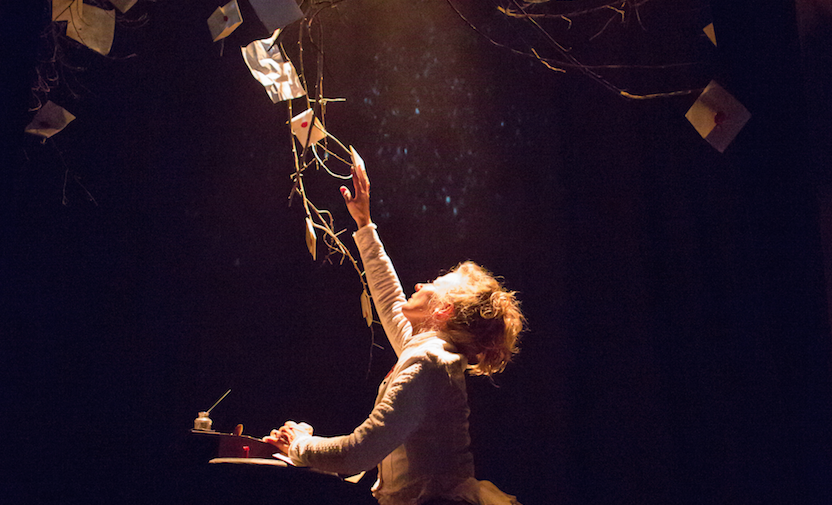
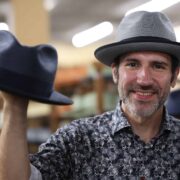

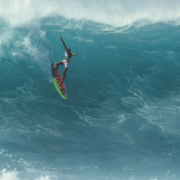
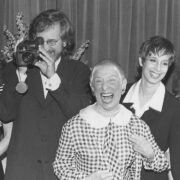


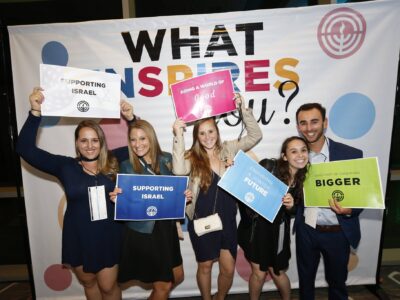

Comments